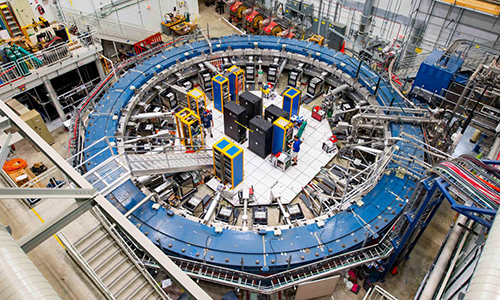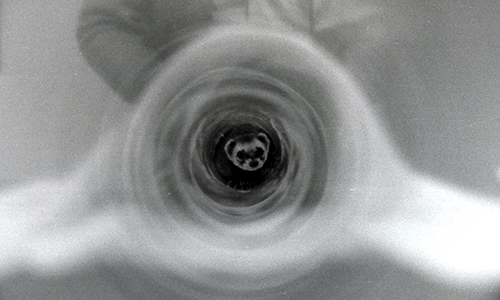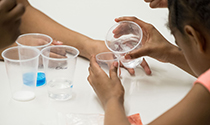|
|
|
|
|
|
|
|
|
|
|
|
| |
With the world’s most intense neutrino beam at Fermilab and Argonne’s planned upgrade to its Advanced Photon Source, the area is a hub for fundamental and applied science, engineering, and industrial development, attracting scientists from all over the world. |
|
| |
|
|
|
|
|
|
|
| |
| |
|
|
| |
The Muon g-2 experiment studies the “wobble” of particles called muons as they travel through a magnetic field. (Photography by Reidar Hahn/Fermilab) |
|
| |
|
|
|
|
| |
|
|
|
|
|
| |
The Standard Model of particle physics describes scientists’ best—but incomplete—understanding of how matter in the universe interacts with fundamental forces. This April physicists announced results from Fermilab’s Muon g-2 (pronounced “g minus 2”) experiment that hint at that unknown, missing part of the model. Using a 50-foot-diameter magnet and the lab’s accelerator complex to study how fundamental particles called muons interact with a magnetic field, the experiment revealed that the muons were acting in a way that doesn’t make sense according to the Standard Model. One possible explanation: they’re interacting with undiscovered forces or particles, possibly offering a preview of new physics. |
|
| |
|
|
|
|
|
|
|
| |
|
|
|
| UChicago has a particle accelerator on campus: a cyclotron used to produce radioisotopes for nuclear medicine. |
|
|
|
| |
|
|
|
|
|
| |
|
|
|
| Researchers are using Argonne’s Advanced Photon Source X-rays to help turn llama antibodies into potential therapies against COVID-19. |
|
|
|
| |
|
|
|
|
|
| |
|
|
|
| Argonne-UChicago physicist Linda Young advances X-ray science and equity in physics. |
|
|
|
| |
|
|
|
|
|
|
|
|
|
|
|
|
|
| |
| |
|
|
| |
Felicia the ferret enters an accelerator tube—not yet operational—to do some cleaning. (Photo courtesy Fermilab History and Archives Project) |
|
| |
|
|
|
|
| |
|
|
|
| |
What do particle physicists and English poachers have in common? Both used ferrets to do their dirty work. |
|
| |
|
|
|
| |
In 1971, Fermilab scientists had a problem: How could they clean their brand-new accelerator, destined to be four miles long? A visiting English scientist had a pipe-cleaning proposal. Meet Felicia, Fermilab’s scampering solution. |
|
| |
|
|
|
|
|
|
|
|
|
|
|
|
|
| |
| |
Visit the Alumni & Friends website for stories, podcasts, and other features, curated for you on UChicago Review. Create an account for a more personalized experience.
Sign up to receive µChicago monthly. |
|
|
|
| |
|
|
|
|





